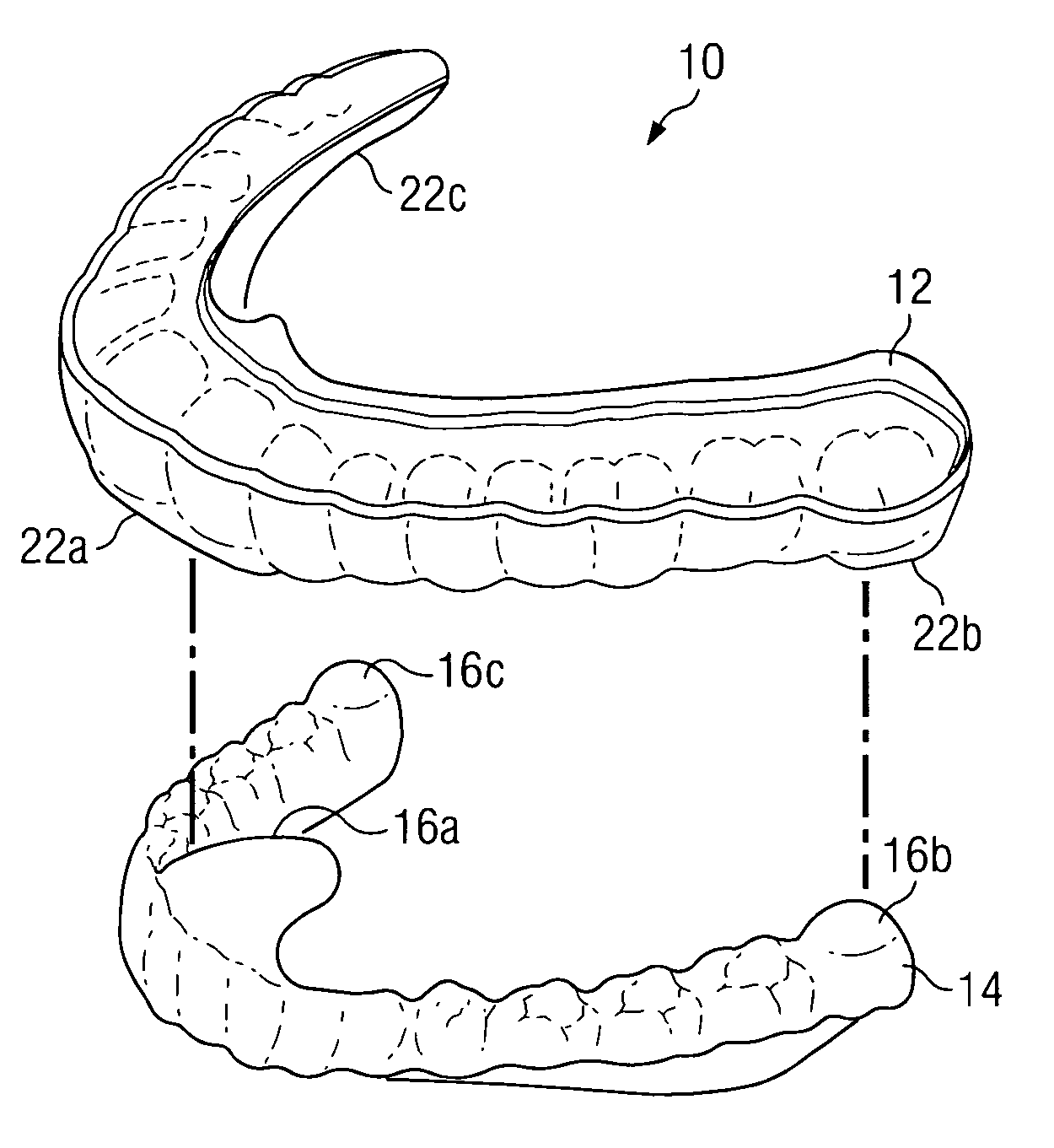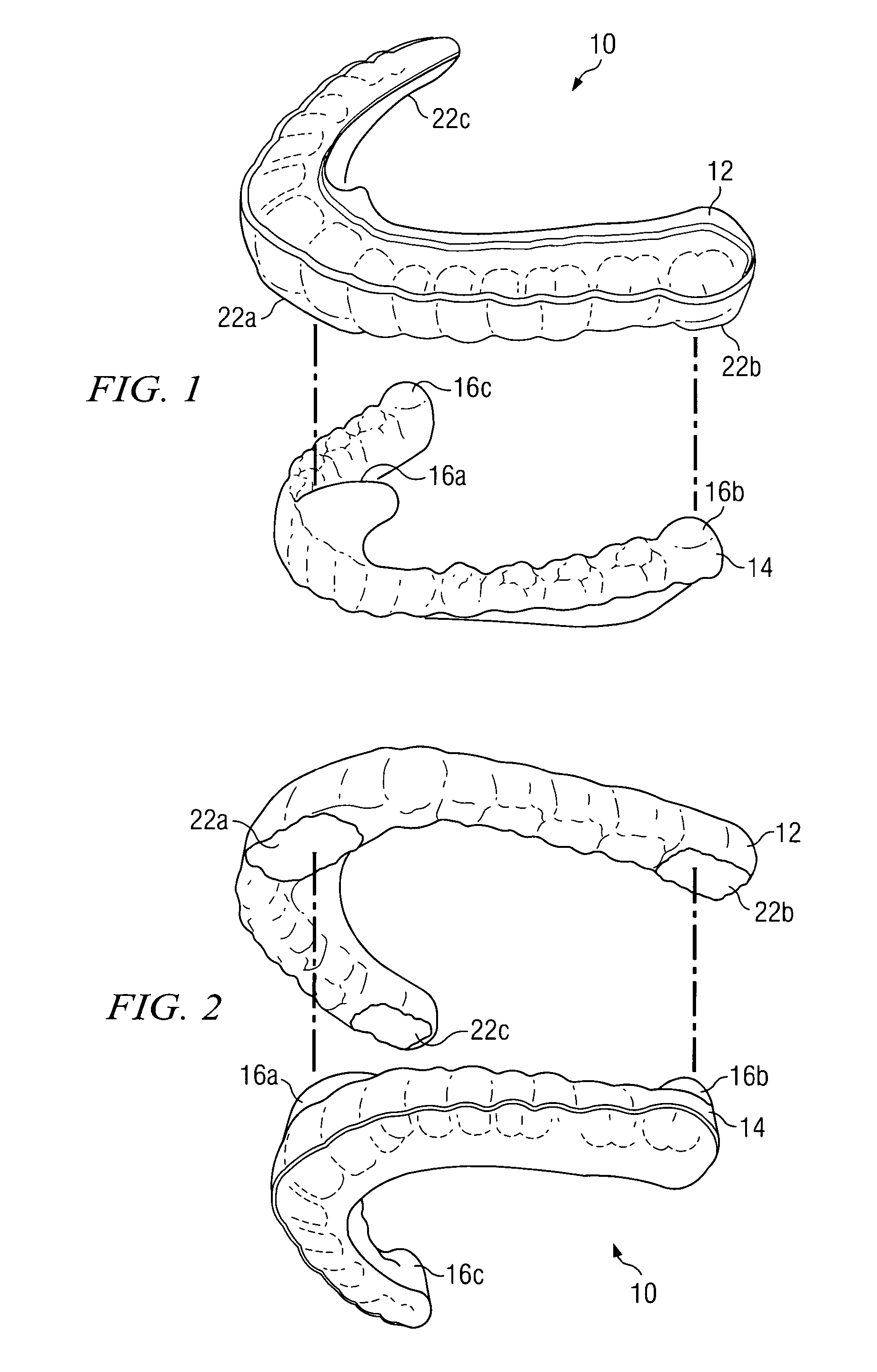Oral appliance for maintaining stability of one or more aspects of a user's masticatory system
a technology of masticatory system and oral appliance, which is applied in the field of oral appliance for maintaining stability of one or more aspects of the masticatory system of users, can solve the problems of deterioration of the joint, excessive wear of teeth, and loose teeth, and achieve the effect of reducing or eliminating problems and disadvantages
- Summary
- Abstract
- Description
- Claims
- Application Information
AI Technical Summary
Benefits of technology
Problems solved by technology
Method used
Image
Examples
Embodiment Construction
[0027]FIGS. 1 and 2 illustrate top perspective and bottom perspective views, respectively, or an example oral appliance 10 for maintaining stability of one or more aspects of a user's masticatory system. Aspects of the masticatory system include at least the temporomandibular joint, associated musculature, and the teeth, although in certain embodiments of the present invention oral appliance 10 may benefit one or more other aspects of the masticatory system. Oral appliance 10 includes an upper arch 12 adapted to receive at least some of a user's upper teeth and a lower arch 14 adapted to receive at least some of the user's lower teeth. Arches 12 and 14 may be any arches suitable for dental uses. Arches 12 and 14 are preferably high quality custom arches that have been customized to fit the definition of a particular user, for example, from “stone” models using an acrylic, composite, or other material suitable for high quality orthodontic applications. In the alternative, for example...
PUM
 Login to View More
Login to View More Abstract
Description
Claims
Application Information
 Login to View More
Login to View More - R&D
- Intellectual Property
- Life Sciences
- Materials
- Tech Scout
- Unparalleled Data Quality
- Higher Quality Content
- 60% Fewer Hallucinations
Browse by: Latest US Patents, China's latest patents, Technical Efficacy Thesaurus, Application Domain, Technology Topic, Popular Technical Reports.
© 2025 PatSnap. All rights reserved.Legal|Privacy policy|Modern Slavery Act Transparency Statement|Sitemap|About US| Contact US: help@patsnap.com



